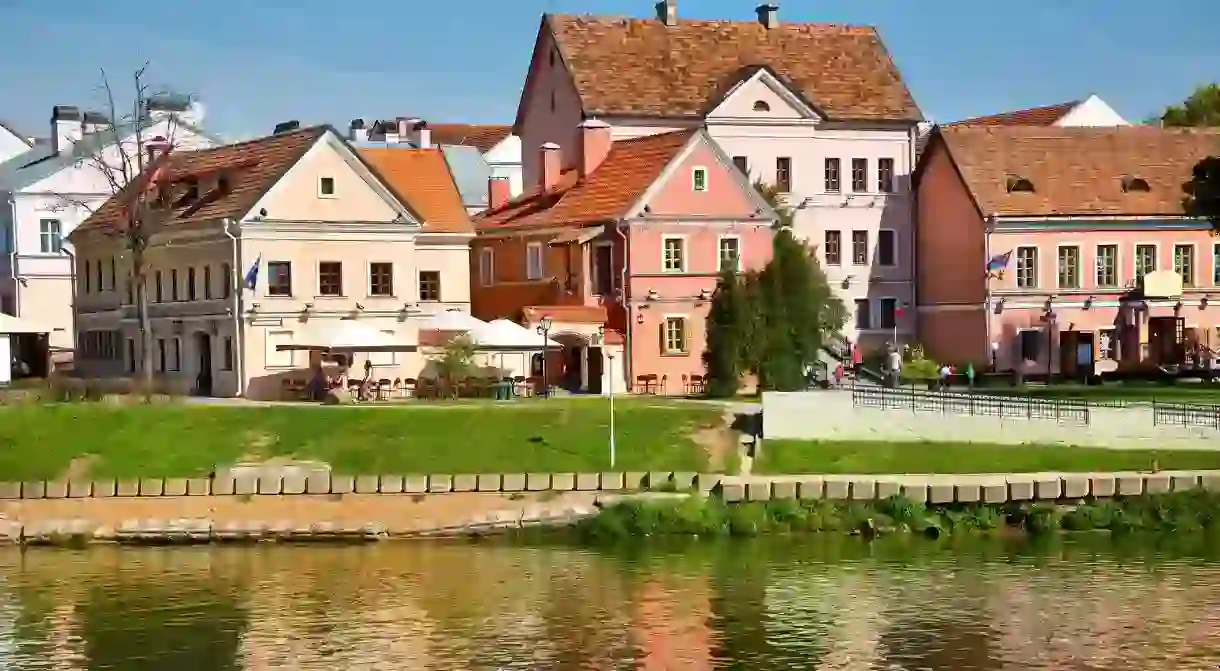The Best Things to Do in Minsk, Belarus

Soviet-era architecture, world-renowned arts venues such as the Bolshoi Opera and Ballet Theatre, as well as quirky sights like the Cat Museum draw visitors to the capital city of Belarus. Despite being almost obliterated during World War II, Minsk has transformed itself into one of the country’s most progressive and vibrant cities over recent decades. This often-dismissed destination is well worth a weekend break – here’s our selection of Minsk’s top attractions.
Visit the Cat Museum
Museum
This temple for feline fans is located just over the river from Gorky Park, and serves as both a museum and a shelter. In addition to art exhibitions adhering to the cat theme, there are also dozens of furry creatures wandering about, saved from the streets by the museum’s volunteers. You can pet these resident felines – or even adopt one. After your visit, drink a “cat coffee” or “cat tea” in the cat cafe.
Ponder masterpieces in the Museum of Contemporary Art
Museum
The Museum of Contemporary Art is the biggest state institution in Belarus and concentrates solely on works produced in the 20th and 21st centuries. Its permanent collection is spread throughout low-ceilinged, whitewashed rooms, and consists of surrealist and abstract paintings, sculptures and photography – mainly by Belarusian and Russian artists. The museum also runs a busy calendar of competitions, masterclasses, kids’ activities and events at its in-house theatre, such as poetry recitals and experimental performances.
Get active in the Falcon Club
Sports Center

Situated just north of Victory Park, this gigantic leisure complex looks like a landed UFO, illuminating everything around it with powerful galactic lighting. Its ultra-modern amenities include a sports arena that also serves as a conference centre and concert venue, tennis and squash courts, a high-tech gym, eight cinemas and a spa with a thermal pool. There are also several places to eat and drink, as well as outdoor and heated indoor parking spaces.
Stroll around Independence Square
Architectural Landmark
This 70,000sqm square is one of the largest in Europe. Designed to host military parades and formerly referred to as Lenin Square, it’s home to many of Minsk’s most important buildings. These include the somewhat bleak-looking City Hall and the early 20th-century Church of Saints Simon and Helena, a neo-gothic building that was used as a cinema during the Soviet era. It’s known as the Red Church after the colour of its bricks – not, as you might expect, the politics of its architects.
Catch a show at the National Academic Bolshoi Opera and Ballet Theatre
Theater

The white, circular building that houses Minsk’s renowned opera and and ballet companies was opened in 1939 and designed by Iosif Langbard, the Belarusian architect also responsible for Independence Square. Its resident musicians are on stage several times a week, performing legendary ballets and operas in a hall richly decorated in gold, white and red. Whatever time of year you’re visiting Minsk, there will almost certainly be scheduled performances of classics such as Tchaikovsky’s Swan Lake and Bizet’s Carmen.
Tour the Belarusian State Museum of the History of the Great Patriotic War
Museum
The Belarusian Great Patriotic War Museum was opened in 1944, during World War II. Belarus was hugely affected by the war, losing millions of its population – a fate the country suffered again during Stalin’s reign over the Soviet Union. The museum was moved and enlarged throughout its history, and it’s now housed in a splendid building in Heroes Square. Learn what life was like for Minsk’s residents during the conflict, and marvel at the glass dome in the Hall of Victory.
Walk through leafy Gorky Park
Park

Gorky Park doesn’t only exist in Moscow – Belarus boasts one of its own. This park was established in 1800 as a simple garden, and was later named after Maxim Gorky, the famous Soviet writer. Currently, Gorky Park has an amusement park, an ice skating rink and an observatory. The amusement park features a 56-metre-high Ferris wheel, and there is a planetarium in the observatory.
Peek inside the Cathedral of the Holy Spirit
Cathedral
Despite being banned during Communist times, religion has survived in the country and continues to play a part in Belarusian life today. The striking Cathedral of the Holy Spirit is the centre of the Belarusian Orthodox Church. It dates back to 1633-1642 and also has an adjoining monastery. Inside, gaze up at the glittering chandeliers and gilded ornamentation – keep your eyes peeled for the Minsk Icon, dating from around 1500.
Watch football at Dinamo Stadium
Stadium

Belarus may not have set the world alight in the football stakes just yet, but the city has a highly impressive national football stadium. Dinamo Stadium has a long history: it was first opened in 1934, but was sadly destroyed during the World War II. It was used for the 1980 Summer Olympics and the 1985 under-20s World Cup – Belarus was part of the former Soviet Union on both occasions. Local teams Dinamo Minsk and FC Minsk have played here throughout the years, and today it is the main home for the Belarus national team.
Cross onto the Island of Tears
Natural Feature
The symbolic Island of Tears is certainly worth a visit. Enter the island via a small footbridge, where you’ll find a memorial commemorating the Soviet Union’s nine-year war with Afghanistan – which occurred between 1979 and 1988. On the island, there is also a sacred statue of a young boy with angel wings. His private parts are more golden than the rest of the sculpture, as many Belarusian girls touch them on their wedding day in a superstition that means they will be certain to have children.
Jonny Blair contributed additional reporting to this article.













